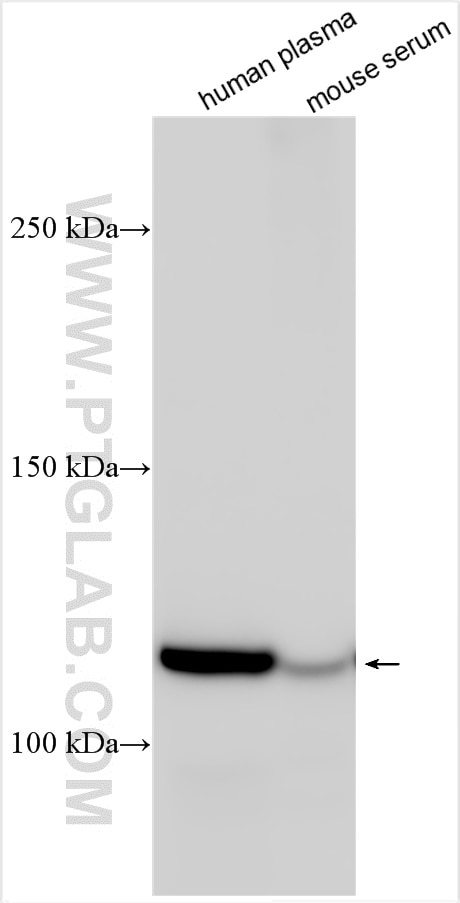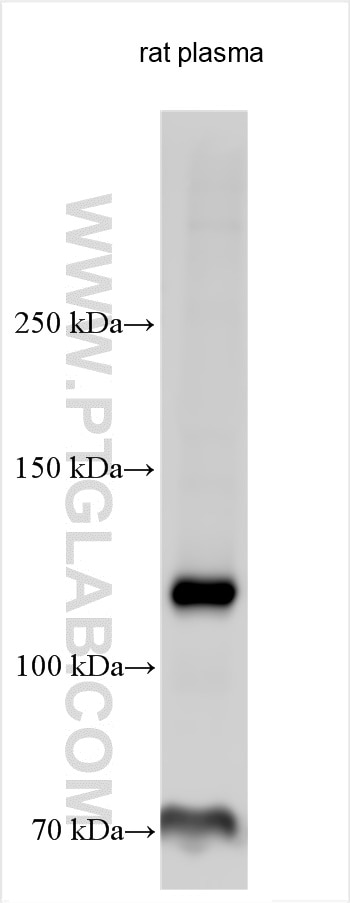Tested Applications
| Positive WB detected in | human plasma, rat plasma, mouse serum |
Recommended dilution
| Application | Dilution |
|---|---|
| Western Blot (WB) | WB : 1:500-1:2000 |
| It is recommended that this reagent should be titrated in each testing system to obtain optimal results. | |
| Sample-dependent, Check data in validation data gallery. | |
Product Information
22492-1-AP targets C5 in WB, ELISA applications and shows reactivity with human, mouse, rat samples.
| Tested Reactivity | human, mouse, rat |
| Host / Isotype | Rabbit / IgG |
| Class | Polyclonal |
| Type | Antibody |
| Immunogen | C5 fusion protein Ag17882 Predict reactive species |
| Full Name | complement component 5 |
| Calculated Molecular Weight | 1676 aa, 188 kDa |
| Observed Molecular Weight | 120 kDa, 70 kDa |
| GenBank Accession Number | BC113740 |
| Gene Symbol | C5 |
| Gene ID (NCBI) | 727 |
| RRID | AB_3669399 |
| Conjugate | Unconjugated |
| Form | Liquid |
| Purification Method | Antigen Affinity purified |
| UNIPROT ID | P01031 |
| Storage Buffer | PBS with 0.02% sodium azide and 50% glycerol pH 7.3. |
| Storage Conditions | Store at -20°C. Stable for one year after shipment. Aliquoting is unnecessary for -20oC storage. 20ul sizes contain 0.1% BSA. |
Background Information
The complement system is an important effector that bridges the innate and adaptive immune systems. The fifth component of complement, C5, is part of the complement cascade and plays an important role in inflammation and cell killing. It consists of disulfide-linked alpha and beta polypeptide chains but can be cleaved into two active peptides (C5a and C5b) by C5 convertases. Mutations and defects in C5 are associated with severe recurrent infections. (PMID: 20010915; PMID: 8011297; PMID: 6554279)
Protocols
| Product Specific Protocols | |
|---|---|
| WB protocol for C5 antibody 22492-1-AP | Download protocol |
| Standard Protocols | |
|---|---|
| Click here to view our Standard Protocols |





